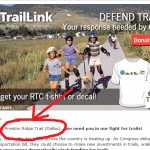Brick-and-mortar health clubs, yoga studios, wellness centers and medical offices suddenly find themselves facing existential challenges.
Your customers, clients and members have suddenly vanished, thanks to their own good judgement or governmental stay-at-home and shelter-in-place orders.
It will be 12-18 months before life looks anything like “normal” so pulling the sheets up over your head really isn’t an option.
This guide helps your health and wellness business figure out its best next steps.
Assess your position
Can you realistically pivot to virtual, online or telepresence to provide either your existing services or new programs?
If you can, do so immediately.
If you can’t, then your best option is to halt your cash outflow and “pickle” your business until the time is right to revive it.
Give it some real thought before you decide your programs or services simply can’t be adapted, though.
If your only alternative is to just…sit…at….home and wait things out, and you don’t have to replace the lost income stream immediately, our advice is to go ahead and start building a new program or service that works within current constraints.
Keep it super-simple, don’t worry about monetizing it right away, and simply focus on seeing what clicks with people. Then tweak and tune from that initial success.
One of our clients is a very successful yoga studio with an extremely loyal base. After their state required them to close, they pivoted to providing a new lineup of videos every week for a monthly fee. It works because they have a large group of very loyal long-time students.
And one of our medical fitness center clients pivoted to video workouts aimed at parents who suddenly find themselves at home All.Day. with active kiddos. One of the trainers records each workout in her backyard, with her own kids. Another family member records them with her phone and she then posts them to Facebook. It works because she’s got a ton of charisma, the kids are super-cute, and the workouts are very simple to follow.
One of our counseling practices pivoted to telehealth, although they never offered it before. Initially, they offered it strictly on a self-pay basis. Then, as insurers expanded telehealth coverage, they began offering it as a service covered by insurance.
On the other hand, we’ve seen most big local gyms simply close their doors, hoping to ride it out and reopen…whenever.
The bottom line: only you can judge if your business has enough of the right assets to pivot: things like solid ideas that will actually resonate with folks, talented people who can pull it off, loyal members, visibility on social, the money to invest in Google Ads or Facebook Ads.
Website
Every B2C health and wellness business should:
- Add a website page dedicated to its COVID-19 response. Update it every time you change something. Include a “date modified” so folks know it’s current.
- Add a site-wide banner that links to that page
- Add a block to your main home page content that very briefly summarizes your approach and links to your main COVID-19 page
- Review and modify any other affected website content, like class schedules or operating hours.
If you’re still open
- Explicitly say that you’re still open on your COVID-19 page and in your banner.
- Provide your updated hours.
- Update your Contact page with this info.
- Describe your new or modified services. If pricing or insurance eligibility is affected, briefly describe the change. Avoid “rah-rah” marketing. Folks are already on your website, they’re clearly already interested in what you have, just give ’em the info.
- Give a detailed list of the precautions you’re taking to ensure that face-to-face contact is as safe as possible. Use bullets, not lengthy paragraphs. You want this to be easy to scan so it quickly reassures people.
- If you’re only responding via email, and not answering the phone or checking voice mail, say so on both your COVID-19 and Contact page.
- Encourage people to sign up for email so you can update them after this crisis.
If you’re temporarily closed
- Say so.
- We’ll eventually get past this crisis, so encourage people to sign up for your mailing list so that they can get updates.
- If you can offer alternative, relevant suggestions, do so. Depending on the nature of your business, this might be streaming workout video recommendations, low-cost telehealth options, Facebook groups or more.
Google My Business
If you’re temporarily closed
Update your Google My Business listing with the new special COVID-19 “temporary closure” status.
“Permanently closed” is only appropriate if you’re closing the business forever.
If you’re open with special hours
Update your operating hours accordingly. Google My Business has a special provision for this.
FYI, Google has said specifically that it’s experiencing staffing shortages due to the virus and it is prioritizing the quality and reliability of information related to essential businesses like medical offices.
If that’s not you, you’re not likely to see new reviews added to your listing anytime soon.
Google is also not currently processing business verification requests from non-essential businesses and posting of other informational updates like category changes to your Google My Business profile will likely be significantly delayed.
Moreover, Google Posts on Google My Business listings have been coming and going in the last couple of weeks. If you’re open, take advantage of the post feature, but don’t panic if your post doesn’t show up. It may eventually appear in a few hours or days, or you may have to recreate it entirely.
Bottom-line: if you thought this would be the perfect time to do some long overdue Google My Business housekeeping, don’t bother.
Google Ads
If you’re still open, make sure your ad agency has updated your campaigns and campaign settings with important information like:
- New operating hours, services and programs
- Selling points like newly available insurance coverage for services that weren’t previously covered, like telemedicine, telehealth and telecounseling
- A sitelink extension to your COVID precautions page if you see customers in-person
Review ad copy and display ad imagery to make sure it’s all still appropriate.
We’re still seeing ads that emphasize group programming, for example. Or invite people to visit businesses that are currently exclusively virtual. And now is obviously not the time for ads that tout “Come meet the friendliest people in Boise!”
If you’re not offering anything to customers right now, turn off your Google Ad spend. Simple as that.
We still see ads running for businesses that are dark right now. They should have turned them off weeks ago!
Facebook & Instagram
Pin a post with your COVID-19 response. Link to your website COVID-19 page.
Update your Facebook business page as appropriate: new or modified services and programs, operating hours, etc.
Advertising
See Google Ads recommendations above. In addition:
It’s especially important to revisit your ad copy and imagery on social media platforms. Your usual “rah-rah” marketing and stock images are probably totally tone-deaf right now.
And a lot of the copy we’re seeing just isn’t relevant when social distancing and shelter-in-place are widely recommended and in many regions mandated.
If you can’t get the copy immediately updated, pause the campaigns. Even if you’re open for business, those ads simply won’t convert. Conserve your cash.
Yelp & other platforms
Think about Yelp, plus all the other places you get leads from. Are you paying for web banners on related or local sites?
Most important, where do you have business listings or info that needs to be updated?
For examples, health clubs get leads from insurer and employer wellness initiatives. Therapists get them from the Psychology Today site. Licensed acupuncturists get them from Acufinder. And so on.
In general, the same best practices we talked about above also apply here:
- Update your operating hours on your business listing
- Provide the latest information about your programs and services
- Link to COVID-19 specifics for your particular business
- Revisit paid advertising budgets, messaging, copy and imagery
Print advertising
If you’re paying for print ads in local shoppers or specialty magazines, or have a postcard campaign underway, contact the publisher or direct mail marketer immediately and negotiate changes to ad copy and imagery before the next issue or campaign drops.
Our advice: don’t spend another dime on these initiatives until appropriate revisions are made, and don’t buy the argument that “at least you’re still keeping your name out there.”
Keep in mind that these marketers are in dire straits right now. The fact that you want to continue marketing at all likely gives you more power than you realize, even if your contract doesn’t officially allow for more revisions.
Radio & television advertising
Unless your spots are still 100% relevant, pull the plug for the time being.
Investing in new creative can be expensive. The situation is changing too quickly right now. New creative that’s perfect for this week might be totally useless next week.
Plan for the future
Getting back to anything like “normal” is going to take a long time — months and years, not days and weeks. It will require COVID-19 testing on a scale the US hasn’t achieved so far, treatments and vaccines that don’t exist yet, and population immunity that hasn’t happened yet.
It’s likely that even after this initial surge we’ll continue to experience periodic COVID-19 recurrences that trigger temporary stay-home restrictions again.
So if you’re in the middle of a business pivot — if you’re radically overhauling how you serve clients, patients and members, just so you can keep your doors open — think of it as your new normal.
Don’t think of it as temporary. Don’t spin your wheels planning for that magical morning when everything flips back to the good old days.
Focus on what people need right now, today, and how you can make it happen now, even though today looks nothing like the way “things worked” on January 1, 2020.
Expect it to change gradually, expect it to evolve incrementally, expect two steps forward and one step back, and most of all: stay nimble.
You’ve got this.




